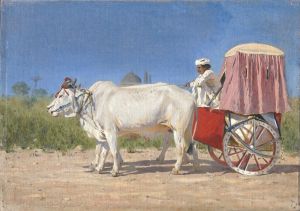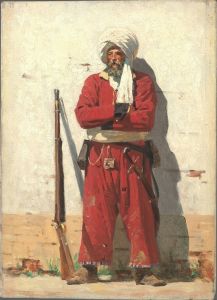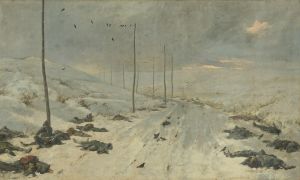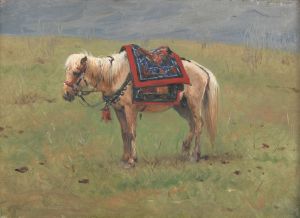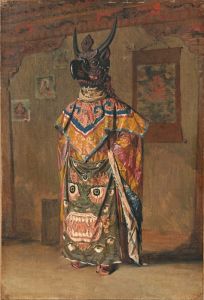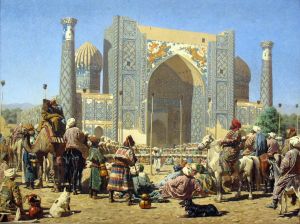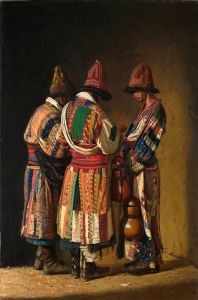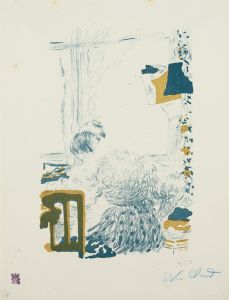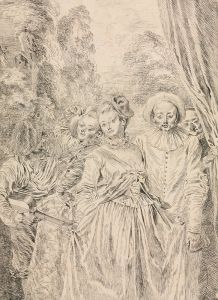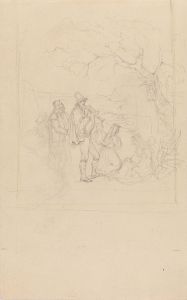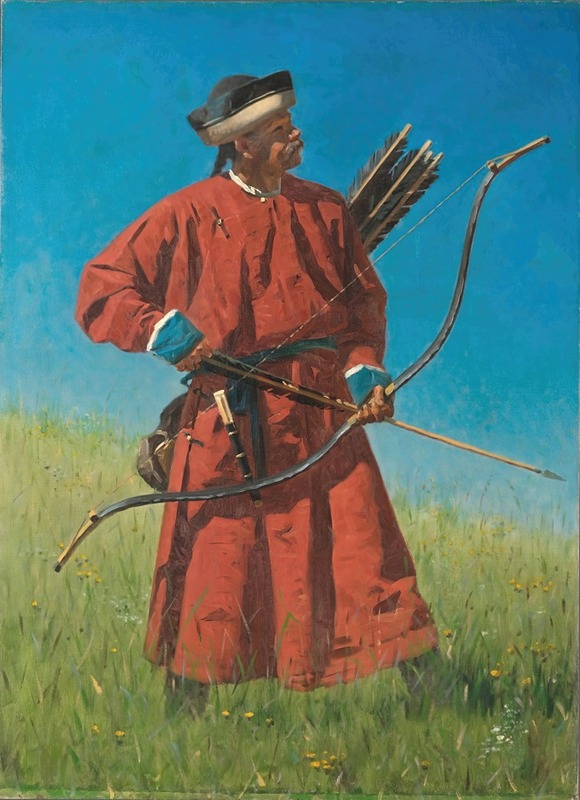
Bukhara soldier
A hand-painted replica of Vasily Vereshchagin’s masterpiece Bukhara soldier, meticulously crafted by professional artists to capture the true essence of the original. Each piece is created with museum-quality canvas and rare mineral pigments, carefully painted by experienced artists with delicate brushstrokes and rich, layered colors to perfectly recreate the texture of the original artwork. Unlike machine-printed reproductions, this hand-painted version brings the painting to life, infused with the artist’s emotions and skill in every stroke. Whether for personal collection or home decoration, it instantly elevates the artistic atmosphere of any space.
"Bukhara Soldier" is a painting by the Russian artist Vasily Vereshchagin, who is renowned for his works that vividly depict scenes from his travels and experiences, particularly in Central Asia and the Middle East. Vereshchagin was a pioneering war artist, and his works often reflect the harsh realities of military life and the diverse cultures he encountered.
Vasily Vereshchagin was born in 1842 in Cherepovets, Russia, and he became one of the most famous Russian painters of the 19th century. He studied at the Imperial Academy of Arts in St. Petersburg and later traveled extensively, which greatly influenced his artistic style and subject matter. Vereshchagin's travels took him to regions such as the Caucasus, Central Asia, India, and the Balkans, where he gathered inspiration for his paintings.
The painting "Bukhara Soldier" is part of Vereshchagin's series of works that focus on Central Asia, a region he visited during the Russian Empire's expansion into the area. Bukhara, now part of modern-day Uzbekistan, was a significant cultural and political center in Central Asia. During Vereshchagin's time, it was part of the Emirate of Bukhara, a state that existed from the late 18th century until it became a Soviet republic in the early 20th century.
Vereshchagin's depiction of a Bukhara soldier is notable for its attention to detail and ethnographic accuracy. The painting captures the soldier in traditional attire, showcasing the distinctive clothing and weaponry of the time. Vereshchagin was known for his commitment to authenticity, often incorporating elements he observed firsthand during his travels. His works are characterized by their realistic portrayal of subjects, which was a departure from the more romanticized depictions common in art of that era.
The artist's approach to painting was often controversial, as he did not shy away from depicting the brutality and suffering associated with war and conflict. This commitment to realism sometimes led to criticism from both the public and authorities, who were uncomfortable with the stark realities his paintings presented. Despite this, Vereshchagin's works were influential in shaping public perceptions of war and the cultures he portrayed.
"Bukhara Soldier" is a testament to Vereshchagin's skill in capturing the essence of the people and places he encountered. His paintings serve as valuable historical documents, providing insight into the cultural and social dynamics of the regions he visited. Vereshchagin's legacy as an artist is marked by his dedication to truth and his ability to convey powerful narratives through his art.
Today, Vasily Vereshchagin is remembered as one of Russia's most important artists, and his works continue to be celebrated for their historical significance and artistic merit. "Bukhara Soldier," like many of his paintings, offers a window into a world that was rapidly changing during the 19th century, and it remains a significant piece in the study of both art and history.





